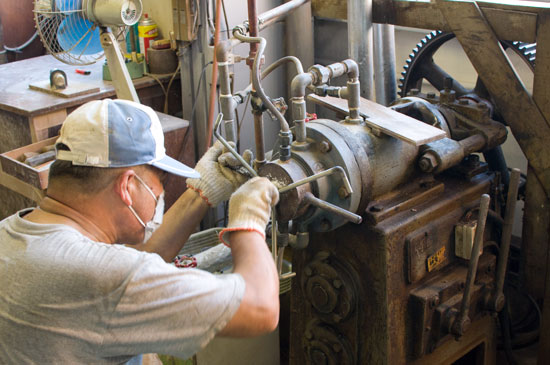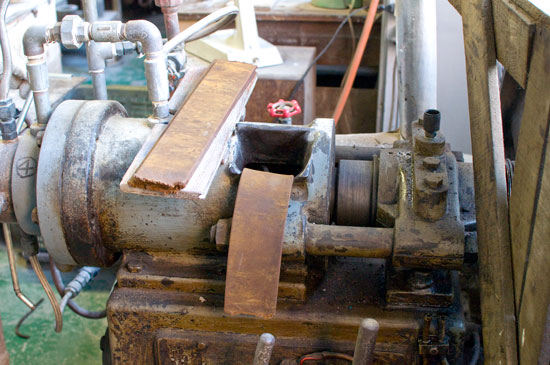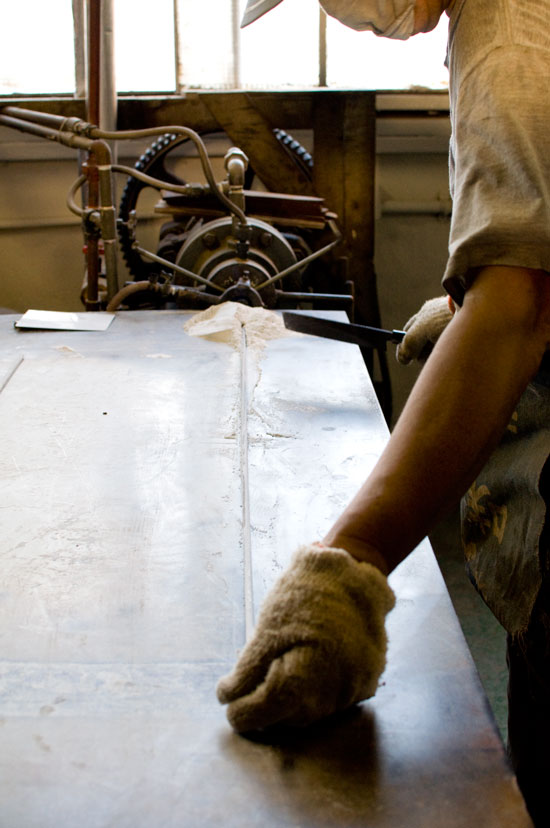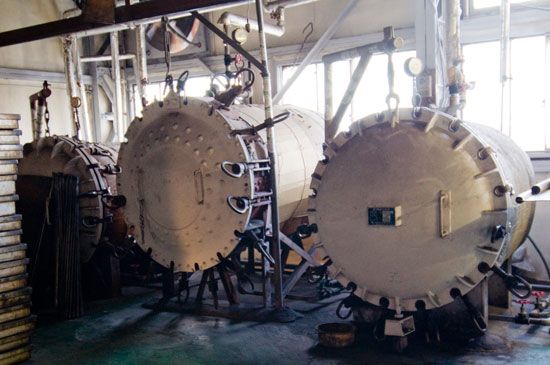Manufacturing Processes of Ebonite
| Manufacturing Processes of Ebonite Rods | |
|---|---|
 |
Mix natural rubber, sulfur and ebonite powder using a roll. |
 |
Cut the mixture into thin rectangles. |
 |
Set up and adjust the extruder to necessary diameter. |
 |
Inject ebonite materials into the extruder to make rods. |
 |
This is how ebonite is ejected from the extruder. The exit hole is ignited to make the surface smooth by heating up tube sections. |
 |
Pre-vulcanized ebonite is still soft. Power is sprinkled to prevent sticking to other substances. |
 |
Place in cans. |
 |
Steam ebonite in the steam boiler for several days. A chemical reaction combining rubber and sulfur molecules is called “vulcanization.” Vulcanization is accelerated by applying heat and pressure by steam. By the chemical reaction, elasticity and strength improves dramatically. And soft ebonite prior to vulcanization becomes ultra hard rubber. Temperature control at the time of heating requires proficient skills. At the beginning, temperature needs to be kept down. Then, temperature is gradually increased. And there is further increase at the end. These temperature controls are done depending on the shape or size of ebonite. Because the boiler cannot be opened in the middle of the steaming process, experts control heating temperature by checking the steam pressure and exhaust intervals. After several days, the manufacturing process of ebonite is finally completed. |